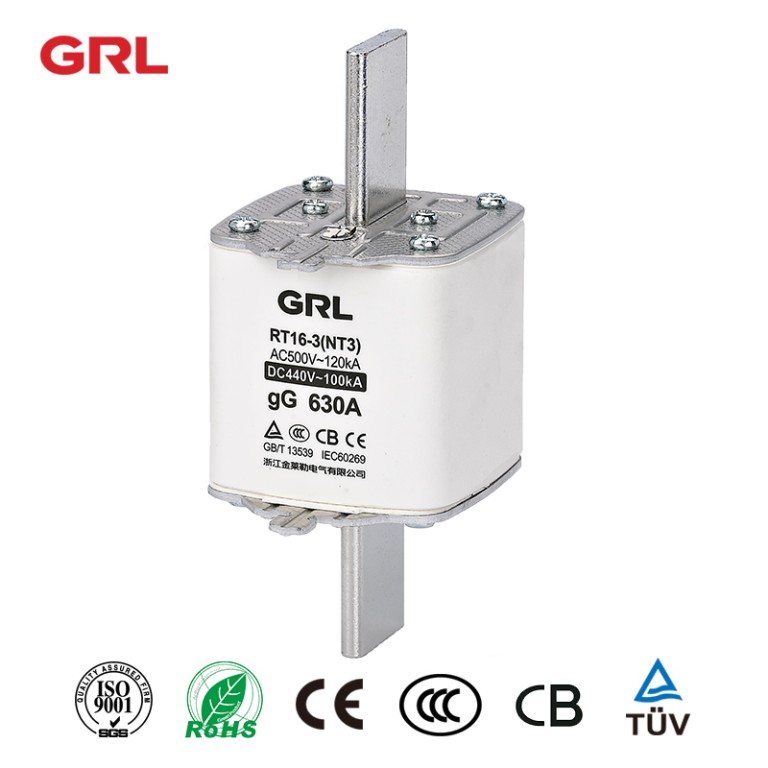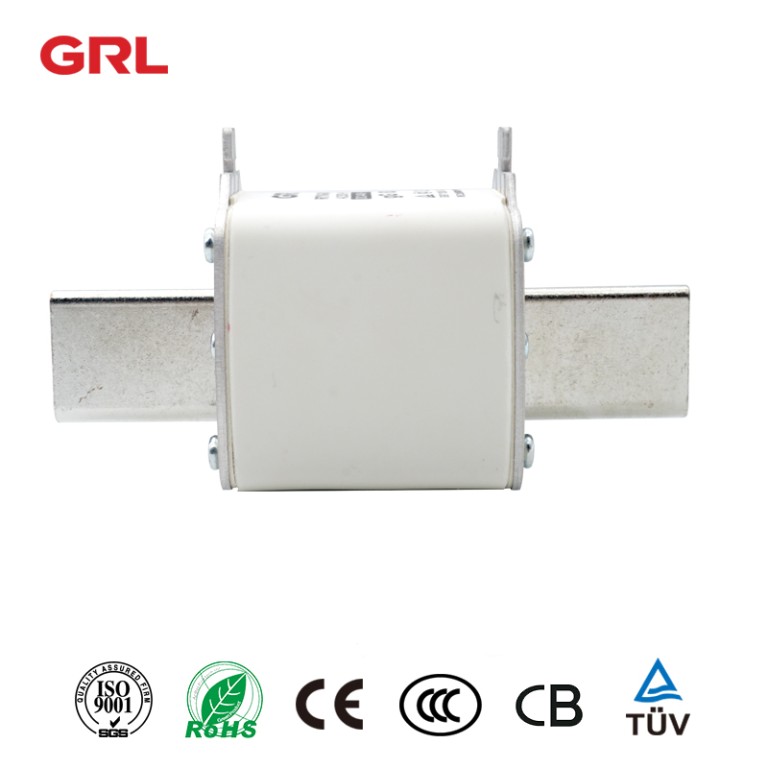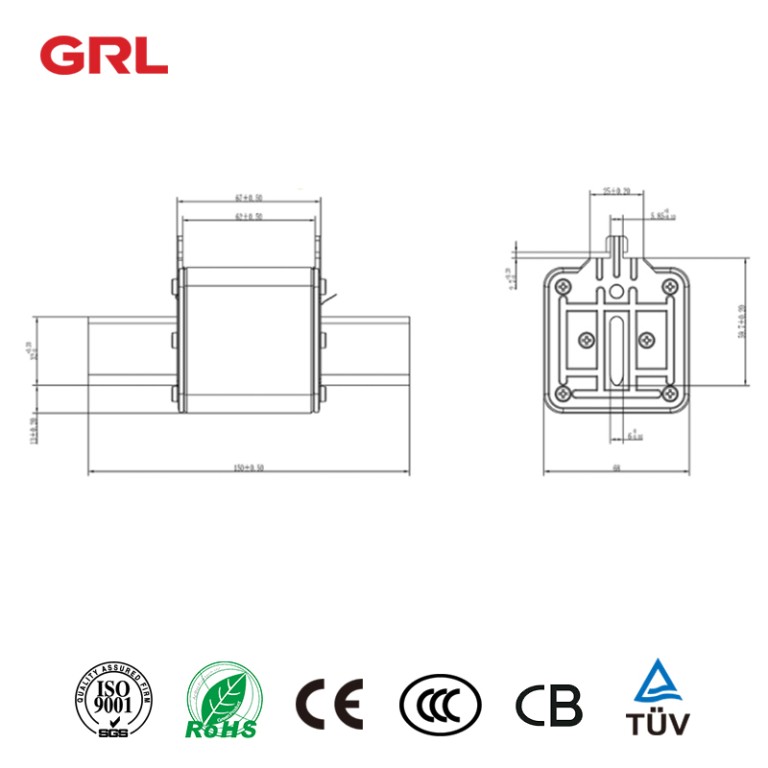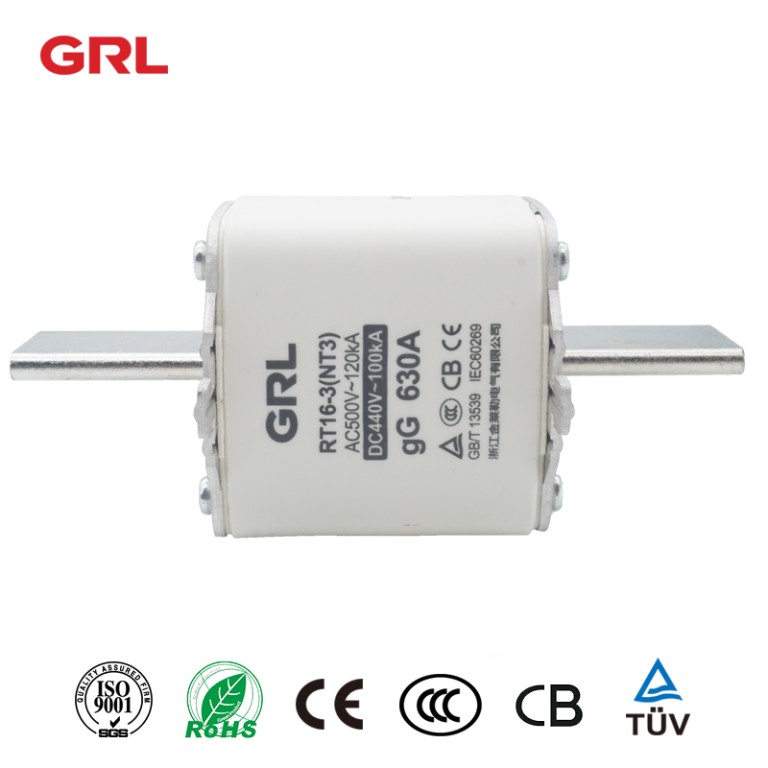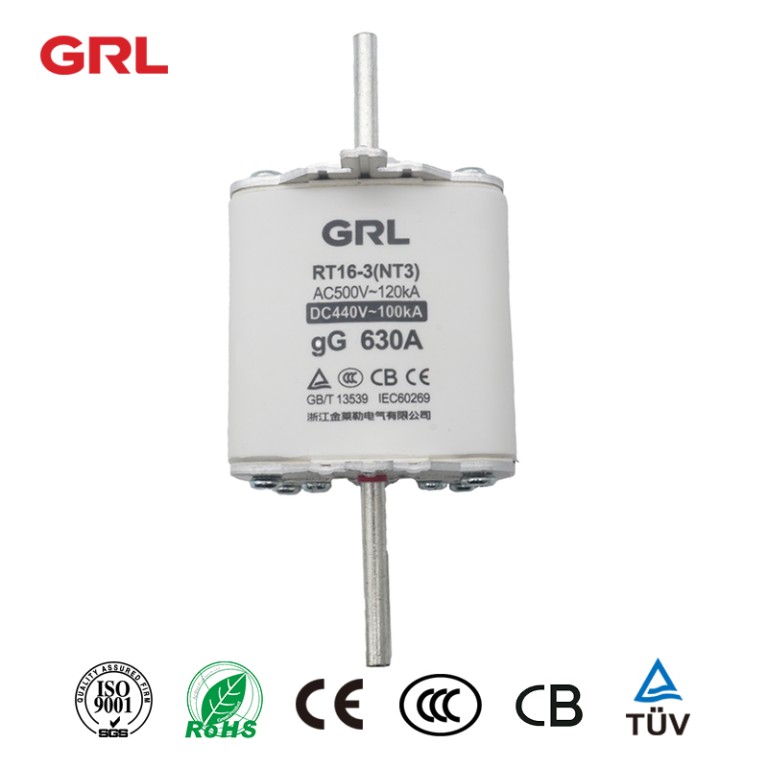Nh3 in line fuse link RT16-3
| Item NO. |
Rated Current In |
Rated Voltage Un |
Breaking Capacity (with Fuse) |
| RT16-3
(NT3/NH3) |
In:315A,400A,500A,630A(500VAC/440VDC);
In:315A,400A,500A(690VAC) |
500VAC
690VAC
440VDC |
120KA(500VAC)
50KA(690VAC)
100KA(440VDC)
|
 Product drawings
Product drawings
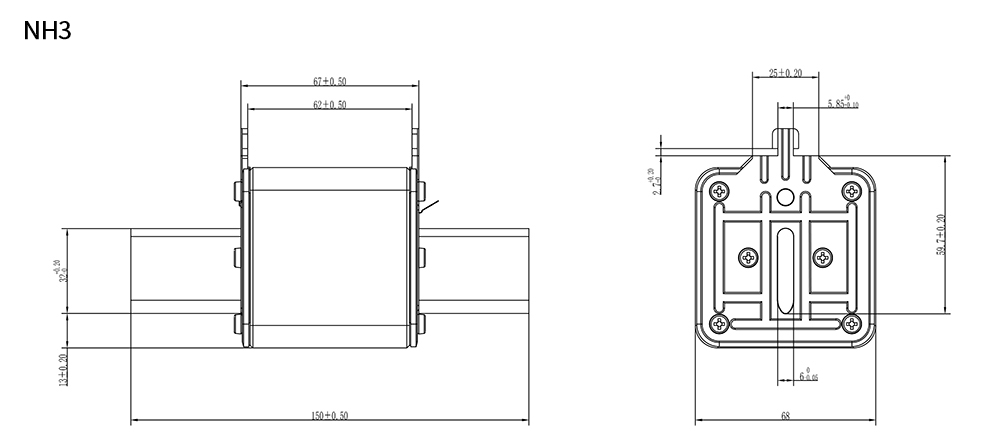
Fuse Link parameters
| Product Item |
RT16(NT/NH)Fuse Link |
| Rated Current |
2A-630A |
| Rated voltage |
500VAC/690VAC/250VDC |
| Breaking Capacity(kA) |
120kA(500V),50kA(690V) |
| Standard |
IEC 60269,CE |
| Applications |
Power control system, industry electrical equipment |
The components of the fuse link
The fuse is mainly composed of cover plate, plug, knife contact, fuse element, filler and ceramic body.in line fuse link
Cover plate:GRLadopts high strength aluminum alloy. The surface embossing makes the product more beautiful and the design of stiffener makes the product more firm and reliable.in line fuse link
Plug:GRLadopts high strength nylon material, which is more resistant to high temperature
Knifecontact:The integrated design rather than riveting structure of copper has stronger performance and lower temperature rise.
Fuse element:GRLadopts high performance copper strip, and the fuse element layout design is more reasonable and breaking capacity is stronger.
Filler:GRLadopts silica sands in high purity.
Fuse body:GRLadopts high frequency porcelain.in line fuse link
Fuses are essential components in electrical and electronic systems as they provide protection against overcurrent and short circuits.
Here are some important notes on the use of fuses:
1.Choosing the right fuse: The right fuse must be chosen based on the voltage and current rating of the circuit. Fuses come in different sizes and ratings, so it’s important to select the appropriate fuse that matches the system’s requirements.
2.Protecting against overcurrent: A fuse protects the system against overcurrent by melting and breaking the circuit if the current exceeds the fuse’s rating. This helps prevent damage to the system and potential safety hazards.
3.Protecting against short circuits: Fuses also provide protection against short circuits, which can occur when a wire or conductor touches a ground or another conductor. The sudden surge in current can cause damage to the system or start a fire. The fuse will blow and break the circuit if a short circuit occurs.
4.Proper installation: Fuses should be installed correctly and securely to ensure they function properly. Improper installation or loose connections can cause the fuse to fail prematurely or not function at all.
5.Replacement: Fuses must be replaced when they blow to restore the system’s protection. It’s important to replace the blown fuse with the same type and rating as the original fuse.
6.Regular inspection: Regular inspection of the fuses and their connections is essential to ensure they are functioning properly. This helps identify any potential issues and prevent damage or safety hazards.
In summary, fuses are important components in electrical and electronic systems as they protect against overcurrent and short circuits.in line fuse link
It’s essential to choose the right fuse, install it correctly, and replace it when necessary to ensure the system’s safety and proper functioning.in line fuse link
 Product drawings
Product drawings